Explained: STOBAR Vs CATOBAR type of Aircraft Carriers
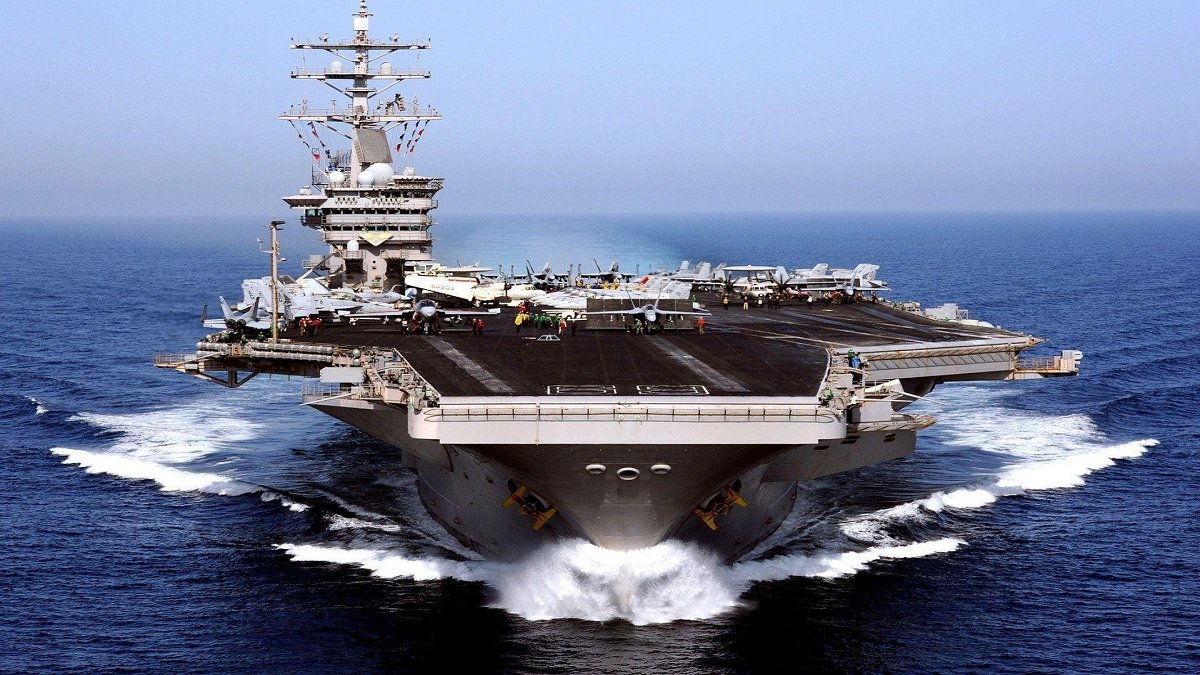
Indian Defence Minister Rajnath Singh recently said that India’s first indigenous aircraft carrier (IAC-1) INS Vikrant will join Indian Navy’s service next year. We have discussed in detail about the TEDBF project which will operate from this carrier in future. In this article we are going to discuss another interesting aspect about aircraft carriers. We will compare two main types of aircraft carriers i.e. STOBAR Vs CATOBAR. The third type, Short Take-off and Vertical Landing (STOVL) is covered in depth in another article.
About Aircraft Carriers and Carrier Battle Groups
Aircraft carriers are actually floating airbases in the sea. Mainly fighter aircraft operate from their decks. They perform various roles like ground attack, air-to-air combat, anti ship and maritime strike, intelligence, surveillance and reconnaissance (ISR) missions. The crucial role of aircraft carrier is beautifully shown in a Hollywood movie ‘Behind Enemy Lines’ (2001).
Aircraft carrier is very important and effective in power projection and military diplomacy. US Navy’s carriers operating across the globe are best example of power projection. A carrier never operates in isolation. It is accompanied by destroyers, frigates, submarines, tanker ships, etc. They provide defence and support to carrier’s operations. This whole group of ships is known as the Carrier Battle Group.
STOBAR Vs CATOBAR Type Of Carriers
These two are basically the assistance systems for an aircraft to take off from a carrier. Basically the runway on the carrier deck is very small compared to the ground based runways. Thus aircraft can’t take off using only the thrust produced by their own engines. They need extra help to get airborne from such a short runway. This help is us provided by STOBAR and CATOBAR systems. Let’s understand them one by one.
STOBAR Type Of Aircraft Carriers
STOBAR stands for Short Take-off But Arrested Recovery (B stands for Barrier also). In this type of carrier, the frontal part of the deck is elevated forming a curve. This is called the ‘Ski-jump’. Thus when an aircraft leaves the deck at the end of the runway, it doesn’t travel straight in the same plane. Instead, it is thrown upward due to this curve. This helps aircraft in gaining height during the initial period. In the meantime aircraft engines with afterburners start generating the required thrust and it gets stabilized in its flight. Here aircraft uses its own power to launch and is assisted by Ski-jump.
Examples– Indian Navy’s carriers INS Viraat which are decommissioned now, INS Vikramaditya (currently operational), and upcoming INS Vikrant are of STOBAR type. Also, British Royal Navy’s HMS Queen Elizabeth, Russian aircraft carrier Admiral Kuznetsov, and Chinese Type 001 and Type 002 use the same system.
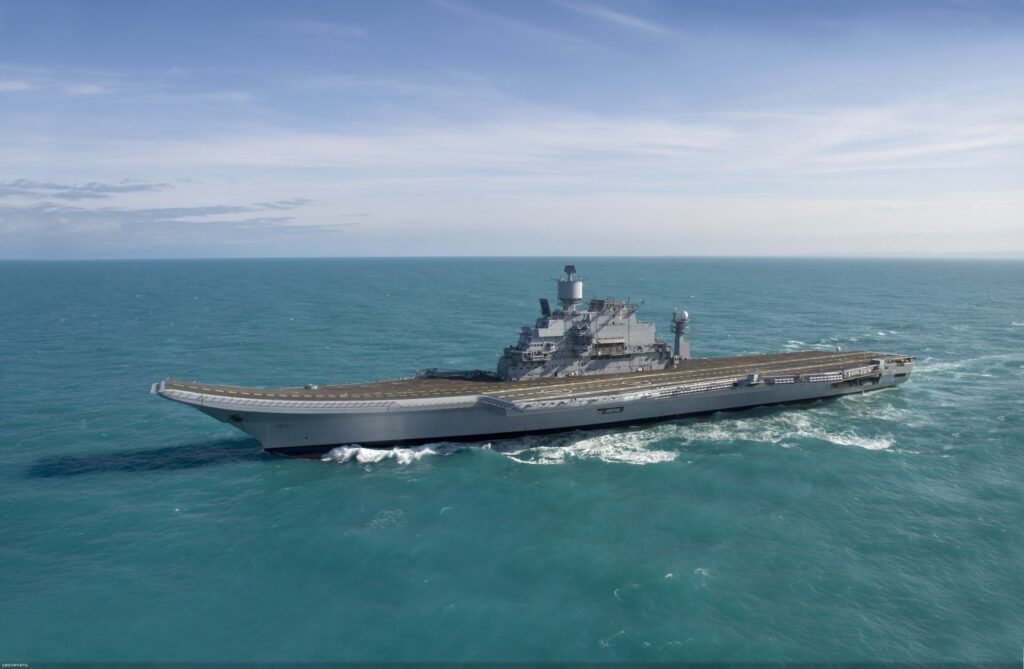
CATOBAR Type Of Aircraft Carriers
CATOBAR stands for Catapult Assisted Take-off But Arrested Recovery (B stands for Barrier also). In these systems, the deck of the carrier is totally flat. Thus they are also called ‘Flat-topped’ Aircraft carriers. We know the working mechanism of Catapult. The energy is stored in it. When this energy is released, it gets covered in kinetic energy. Due to this, the object placed on the catapult is launched with the speed. The same mechanism is applied to the Carriers.
Catapults are there under the deck. The frontal wheel of the aircraft is placed on the moving part of the catapult which is above the deck. Once the energy is released, it moves and achieves great speed in a short distance and time. Thus the Aircraft is launched from the deck with the required speed to get airborne.
Two types of systems are used to power the catapults. One is Steam-powered catapults. Another is Electromagnetic Aircraft Launch System (EMALS).
Examples– US Navy’s carriers like USS Nimitz, USS Ronald Reagan, etc and French carrier Charles de Gaulle.
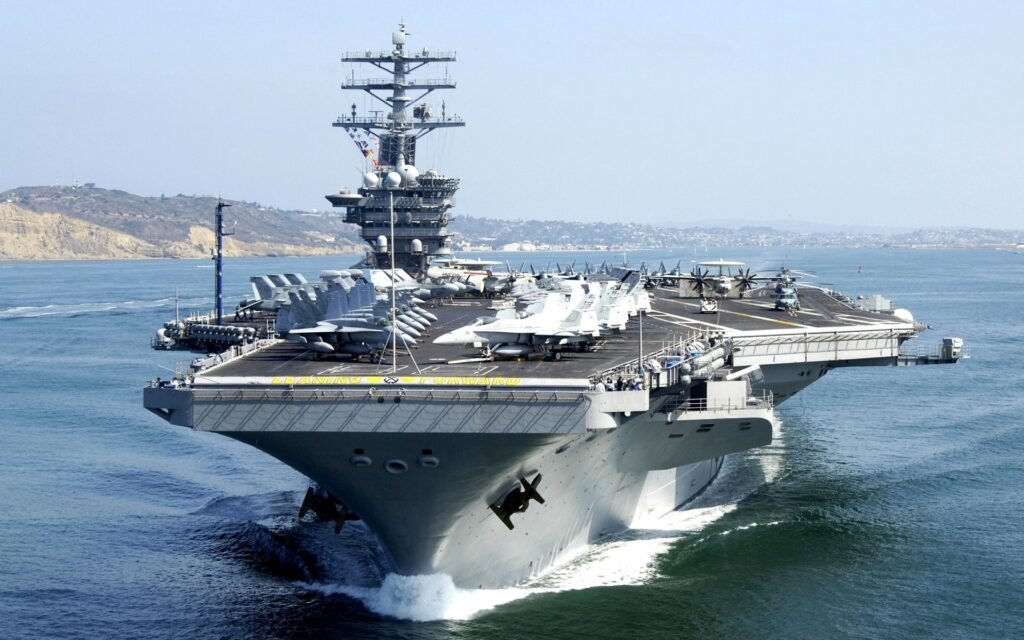
What Is Arrested Recovery?
The runway on carriers is again too short for an aircraft to land. Thus arrested recovery technique is used. The high-strength arrestor wires are placed on deck. The aircraft has a tailhook under its fuselage. Thus tail-hook gets arrested in one of the four wires on the deck. Due to this Aircraft is decelerated rapidly in a short distance. If the aircraft misses all the wires, then it takes off again instantly and reattempts the landing.

STOBAR Vs CATOBAR: A Comparison
Advantages Of STOBAR System
- They are less expensive to develop.
- Easier to operate as less number of crew is required compared to CATOBAR type.
- Less expensive for maintenance as there are no moving parts on the deck.
- No additional system is required to generate force like CATOBAR.
Disadvantages Of STOBAR System
- Limitation on a maximum weight of aircraft- This system cannot launch aircraft with weighing beyond a certain limit. Thus aircraft have to compromise on their payload. This limits weapon and fuel carrying capacity of aircraft. Thus it has to choose between range and firepower. Thus aircraft cannot be operated at their full potential.
- STOBAR type of carrier has to maintain a certain speed to generate the required wind speed on deck to support flight operations.
- Can’t operate supporting aircraft like AWACS as they don’t produce the required thrust-to-weight ratio. Thus AWACS are placed on helicopters. This puts limitations on operations.
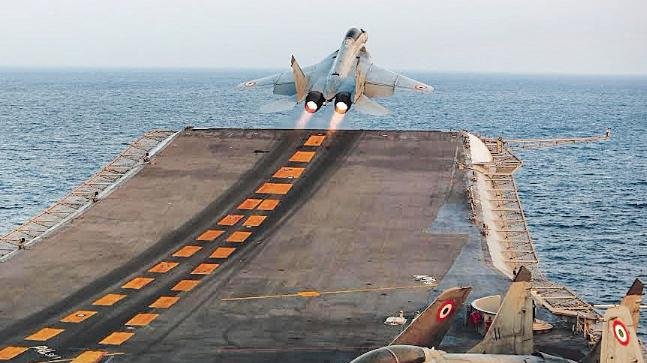
Advantages Of CATOBAR System
- It can launch aircraft with a heavy payload. Thus aircraft can carry its full payload and can operate at its full potential.
- Provides flexibility- It can launch nonfighter aircraft with a low thrust-to-weight ratio. These include AWACS like E-2 Hawkeye. They improve the effectiveness of carrier-launched operations immensely. In the future UAVs can also be launched for roles like mid-air refueling. Recently US Navy has tested such a system from land.
Disadvantages Of CATOBAR system
- High cost of developing.
- Comparatively difficult to operate as more crew is needed to operate various complex systems.
- Expensive to maintain due to many moving parts in Catapult.
- Additional systems are needed to generate energy to power catapult systems.
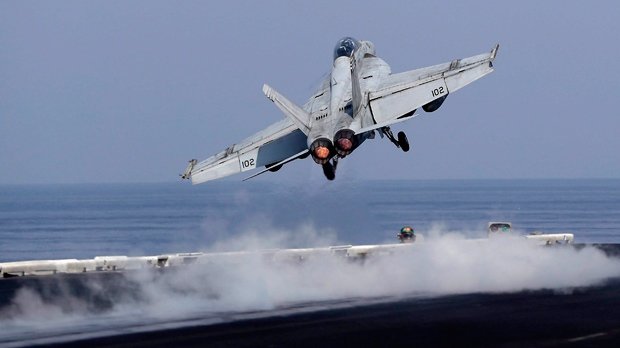
Which System Is Used In Indian Aircraft Carriers? STOBAR Vs CATOBAR
India till now has operated only STOBAR type of carriers. Current carrier INS Vikramaditya and upcoming INS Vikrant are also of the same type. But IAC-2 i.e. INS Vishal (planned) is likely to be a CATOBAR type of carrier. It may have Electromagnetic Aircraft Launch System (EMALS).

Conclusion
We saw in above analysis that CATOBAR type of carriers is more capable than that of STOBAR type. With CATOBAR type of carriers, the Navy become mature in Aircraft Carrier operations and can reach to its full potential. China is going to have its next carrier i.e. Type 003 with CATOBAR system. Thus India needs to move fast with IAC-2 project with CATOBAR system.





